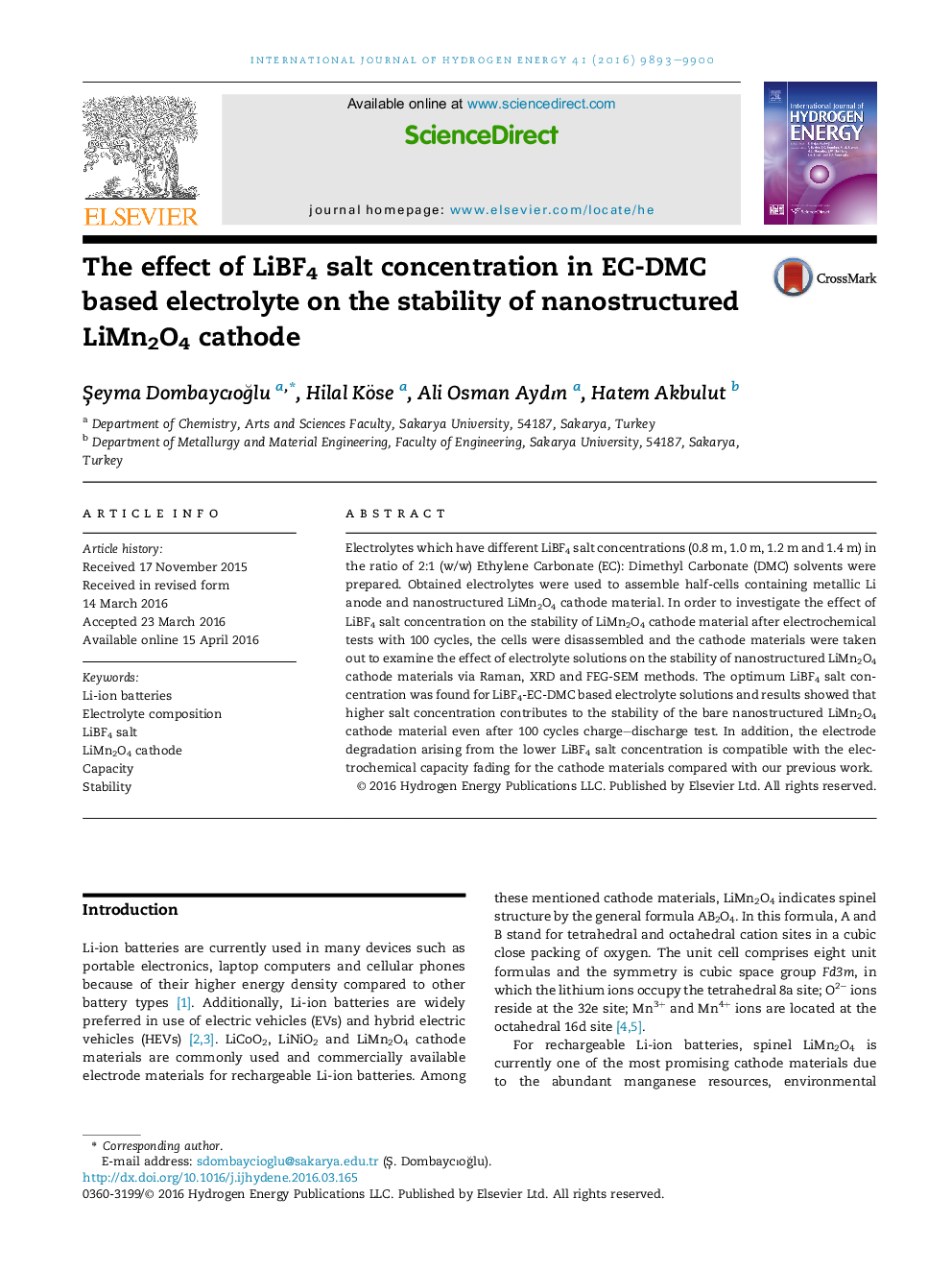| Article ID | Journal | Published Year | Pages | File Type |
|---|---|---|---|---|
| 1277041 | International Journal of Hydrogen Energy | 2016 | 8 Pages |
•Electrolytes including 0.8, 1.0, 1.2 and 1.4 m LiBF4 were prepared in EC:DMC solvents.•After electrochemical tests, the cells containing LiBF4 electrolytes were disassembled.•The effect of electrolytes on the stability of LiMn2O4 cathode materials were studied.•The LiBF4 concentration should be optimized to keep stable of spinel LiMn2O4 cathode.•1.2 m electrolyte yielded maximum discharge capacity, provided better cathode stability.
Electrolytes which have different LiBF4 salt concentrations (0.8 m, 1.0 m, 1.2 m and 1.4 m) in the ratio of 2:1 (w/w) Ethylene Carbonate (EC): Dimethyl Carbonate (DMC) solvents were prepared. Obtained electrolytes were used to assemble half-cells containing metallic Li anode and nanostructured LiMn2O4 cathode material. In order to investigate the effect of LiBF4 salt concentration on the stability of LiMn2O4 cathode material after electrochemical tests with 100 cycles, the cells were disassembled and the cathode materials were taken out to examine the effect of electrolyte solutions on the stability of nanostructured LiMn2O4 cathode materials via Raman, XRD and FEG-SEM methods. The optimum LiBF4 salt concentration was found for LiBF4-EC-DMC based electrolyte solutions and results showed that higher salt concentration contributes to the stability of the bare nanostructured LiMn2O4 cathode material even after 100 cycles charge–discharge test. In addition, the electrode degradation arising from the lower LiBF4 salt concentration is compatible with the electrochemical capacity fading for the cathode materials compared with our previous work.
